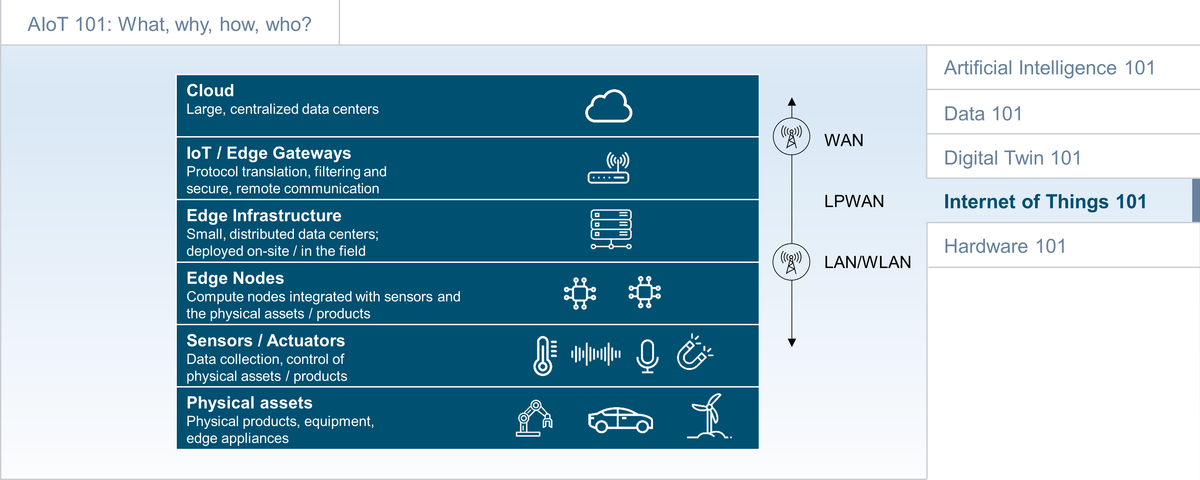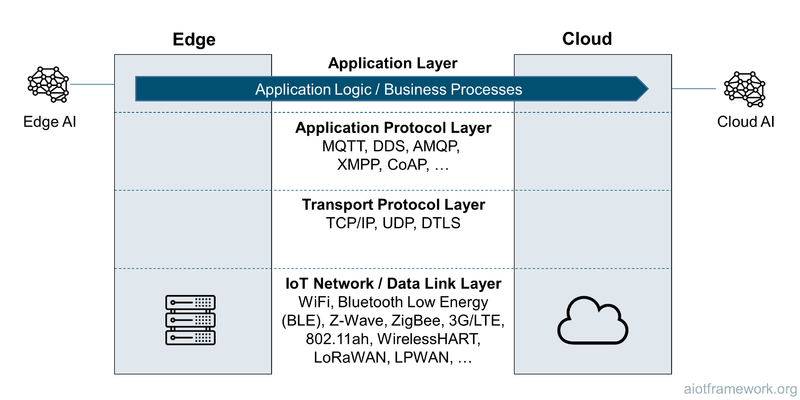
This section provides an Internet of Things 101, including a brief overview, a discussion of IoT Sensors and Actuators, IoT Architecture,IoT Protocol Layers, and IoT Connectivity.
Internet of Things
The Internet of Things (IoT) describes the concept of connecting physical objects (a.k.a. the "Things") which are embedded with sensors and actuators over the Internet. This connection can either be directly between physical objects, or between physical objects and a back-end data center (cloud or on-premise). Surprisingly often, this connectivity will make use of Internet protocols (IP, UDP, etc.), but not communicate via the Internet but rather via closed enterprise networks. IoT has emerged as a concept following earlier approaches like m2m (Machine-to-Machine communication) and Telematics, usually adding a richer set of digital services. Industrial Internet of Things (IIoT) refers to industrial IoT applications. Edge computing is quickly emerging as the field-based compute capacity closer to the physical objects, and as a counterpart to centralized cloud-computing. The boundaries between Edge computing, IoT, and embedded computing can sometimes be blurry. The term IoT Edge Node is usually used to refer to compute nodes which are embedded with physical object in the field. Other types of edge equipment can be independent of physical assets, e.g. local data centers.



